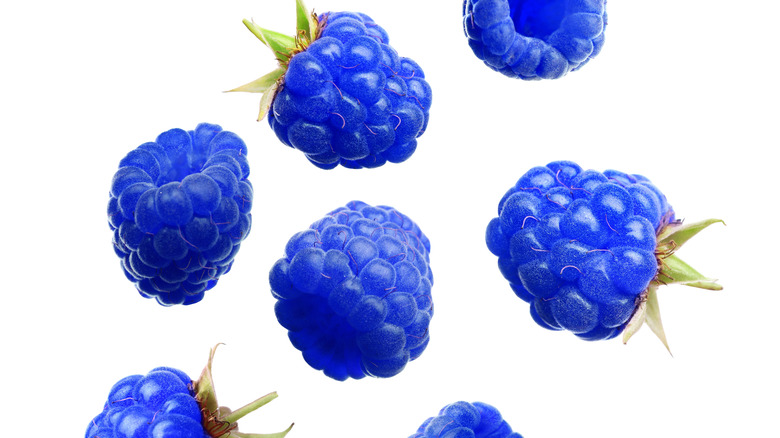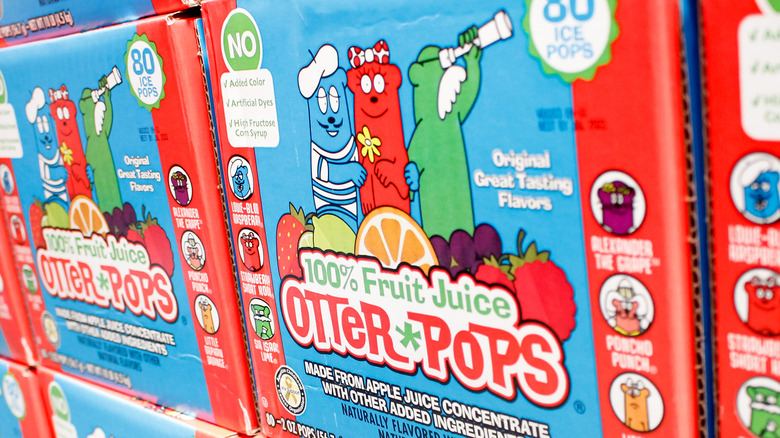Why Some Raspberry-Flavored Things Are Blue
If you've ever gone raspberry picking, you know that the fruits are not blue in the wild. So why is blue raspberry such a popular flavor for candy and other sweets? The reason actually has to do with safety concerns over the wine-red-colored dye that might be more natural-looking. In the 1950s, there were concerns that the dye FD&C Red No. 2, or amaranth, was harmful to human health, according to Bon Appétit. It was eventually banned outright by the Food and Drug Administration in 1976 because of evidence that it caused tumors in lab rats.
At the same time as concerns about Red No. 2 were mounting, flavorers faced a conundrum. Cherry, strawberry, raspberry, and watermelon are all different shades of red, Mental Floss explained. So how to tell them apart? Manufacturers could use different reds for cherry and strawberry, and choose a lighter pink for watermelon. But the safety risk posed by Red No. 2 made it harder to find a solution for raspberry. The first company to solve the problem by turning to blue instead was Gold Medal, according to Bon Appétit. The Cincinnati-based company advertised a blue-raspberry-flavored Sno-Kone in 1958, the first known reference to the flavor. It would not be the last.
The rise of blue raspberry
The popularity of blue raspberry as a flavor really took off in the 1970s thanks to two brands in particular, according to Bon Appétit: ICEE and Otter Pops. ICEE debuted its blue raspberry flavor in 1970 or 1971, and Otter Pops released their blue raspberry popsicle around the same time. The popularity of the flavor spread, and now there are blue-raspberry-flavored Twizzlers and Jolly Ranchers, among other treats. ICEE used a dye called FD&C Blue No. 1, also called Brilliant Blue FCF, according to Allrecipes. The flavor's success can be attributed to the fact that the blue color stood out from other red fruit flavors, and that bright colors are especially attractive to children. Pink lemonade sells better than regular lemonade, for example.
There is actually something like a blue raspberry in nature: the whitebark raspberry (Rubus leucodermis). This plant grows to the west of the Rocky Mountains, from Mexico to Alaska, according to The Manual. However, its color is more blue to purple than a bright blue. Whether brands like ICEE and Otter Pops were inspired by the real thing remains unclear, according to Allrecipes.

